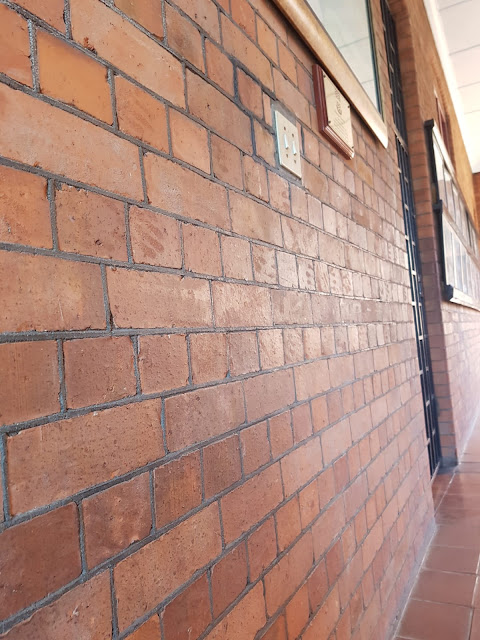The Payne Hall - a Time Capsule
Just as Collard's Folly is a time capsule that preserved stories of life at Jeppe Boys, so is the Payne Hall. I wanted to document some of these special finds.
In their time at Jeppe, I'm sure everyone has been up, down and across the Payne Hall a million times.
Have you seen these?
Fingerprints of the Payne Hall
Fingerprints on the bricks
prints next to Mr Matteucci's class room door
If these wall could talk ......
The current Jeppe High School for Boys stone building was build in 1909. After about a 112 years of friction the bricks in the Payne Hall are revealing some of their secrets.
The bricks that were used to construct the Payne Hall were made by hand and the fingerprints of the maker's have been preserved like fossils.
So I wondered, who would've made these bricks and where?
Below find some snippets of information I found
In October 1887 the government of the ZAR bought the south-eastern portion of the farm Braamfontein. Quite a big stream flowed along the farm and they intended selling the water to the residents of Johannesburg. But there were also large quantities of clay, suitable for brickmaking, along the stream. The government decided that more money was to be made from issuing brick maker's licences at five shillings per month. The result was that many landless Dutch-speaking burghers (citizens) of the ZAR settled on the property and started making bricks. They also erected their shacks there. Soon the area was known either as Brickfields or Veldschoendorp. Soon other working poor, settled there.
https://en.wikipedia.org/wiki/History_of_Johannesbu
 AT the turn of the 20th century, the Newtown Precinct was originally known as the Brickfields. This area was rich in clay, brick making became the most popular form of generating income, and even better if an individual had their own clay mixer for making bricks. By 1896, about 7 000 people of all races lived in the Brickfields area, later named Burghersdorp.
AT the turn of the 20th century, the Newtown Precinct was originally known as the Brickfields. This area was rich in clay, brick making became the most popular form of generating income, and even better if an individual had their own clay mixer for making bricks. By 1896, about 7 000 people of all races lived in the Brickfields area, later named Burghersdorp.
As this land was close to the centre of Johannesburg and the railway line, many businesses and immigrants coming from overseas bought stands in Burghersdorp. Soon, trading companies, banks, brick companies, a brewery, and fisheries moved into the area. Many Indians set up shops and eateries along Locatie (now known as Carr Street), which led to the station.
The bricks could not have come from Brickfields because in 1904 the residents of Brickfield were all re-located to Klipspruit. Newtown was established.
Interesting snippet,
Did you know, Sir Julius Jeppe's father built the first brick house in Johannesburg?
Sir Julius Jeppe (jnr) was
one of Ford’s assistants in Pretoria during this period. He settled
in Johannesburg in 1886 where he built the mansion "Friendenheim" in Belgravia.
His father Julius Jeppe snr. built the first brick house in Johannesburg in
1886.
I still want to try and find out where the bricks came from, found this ad in the African Architect, Septmber 1912. So the bricks might have come from here.
Please click on the link below, an awesome collection of information and Photographs of Brickfields
https://johannesburg1912.com/2021/09/26/history-of-newtown-pt-1/
Sources:
https://www.sahistory.org.za/article/johannesburg-segregated-city
http://www.scielo.org.za/scielo.php?script=sci_arttext&pid=S2225-62532015000400014https://www.scribd.com/document/262718459/Heritage-History









No comments:
Post a Comment